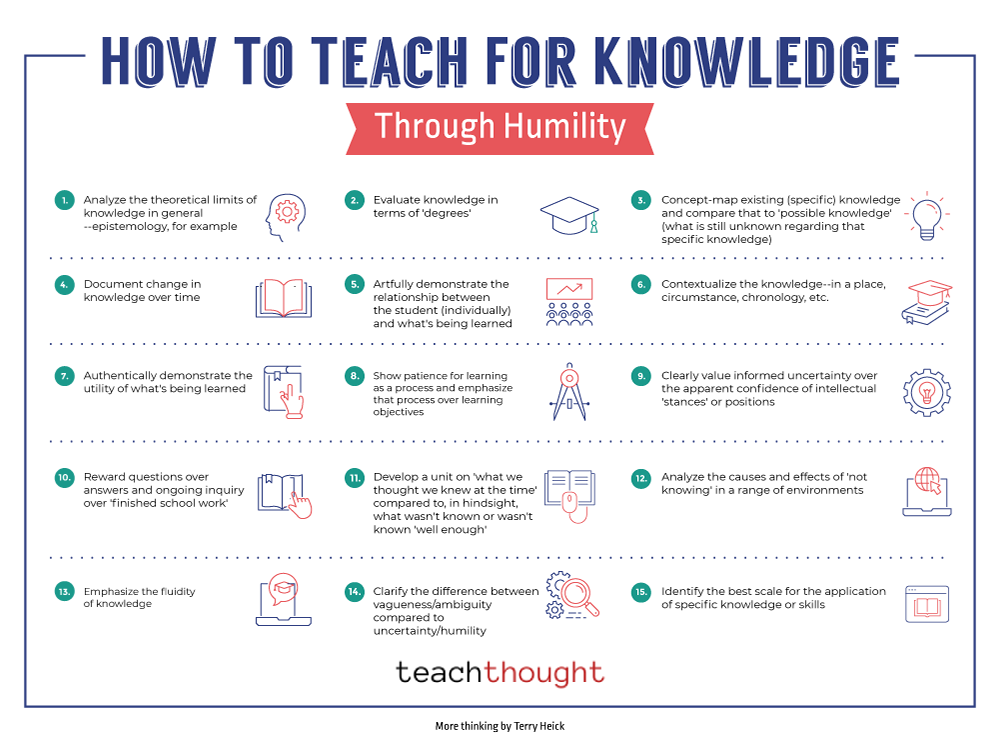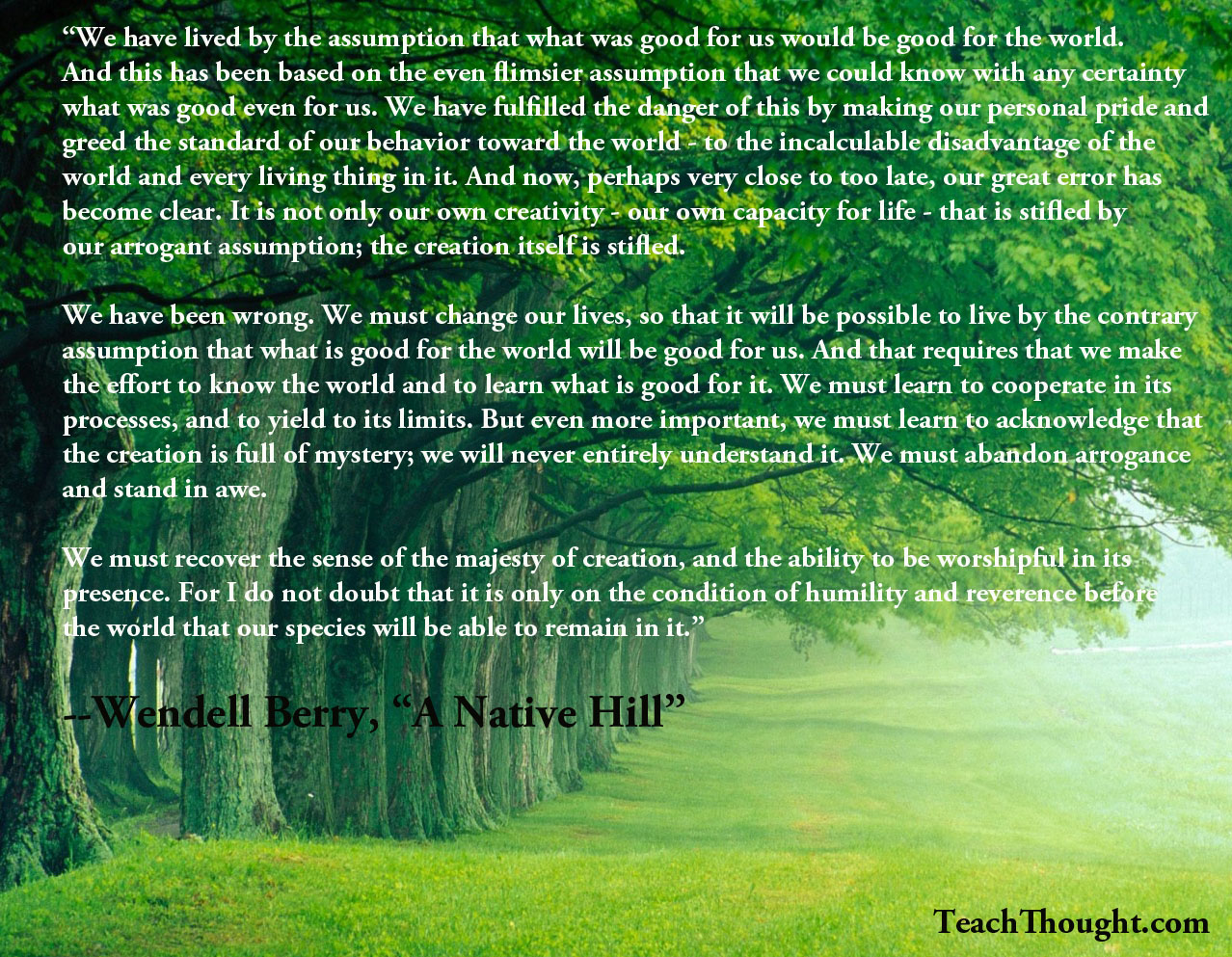

by Terry Heick
Humility is an intriguing starting point for learning.
In a period of media that is electronic, social, cut up, and constantly recirculated, the challenge is no more access yet the high quality of accessibility– and the reflex to then evaluate unpredictability and “fact.”
Discernment.
On ‘Recognizing’
There is a tempting and warped feeling of “understanding” that can lead to a loss of respect and even privilege to “recognize points.” If absolutely nothing else, contemporary innovation accessibility (in much of the world) has actually changed nuance with phenomenon, and process with access.
A mind that is correctly observant is additionally appropriately humble. In A Native Hillside , Wendell Berry indicates humility and limits. Standing in the face of all that is unknown can either be overwhelming– or illuminating. Exactly how would it transform the discovering process to begin with a tone of humbleness?
Humbleness is the core of critical reasoning. It claims, ‘I don’t recognize enough to have an enlightened opinion’ or ‘Let’s discover to minimize uncertainty.’
To be independent in your very own knowledge, and the limitations of that expertise? To clarify what can be understood, and what can not? To be able to match your understanding with an authentic demand to understand– job that naturally enhances essential assuming and sustained query
What This Looks Like In a Class
- Assess the limitations of understanding in ordinary terms (a basic introduction to epistemology).
- Review understanding in levels (e.g., certain, likely, feasible, not likely).
- Concept-map what is currently recognized about a certain topic and compare it to unanswered inquiries.
- Record how understanding changes over time (personal discovering logs and historic photos).
- Show how each pupil’s point of view shapes their connection to what’s being found out.
- Contextualize understanding– place, circumstance, chronology, stakeholders.
- Demonstrate authentic utility: where and exactly how this understanding is made use of outside college.
- Show perseverance for finding out as a procedure and highlight that procedure together with objectives.
- Clearly value educated unpredictability over the confidence of fast conclusions.
- Reward continuous concerns and follow-up investigations more than “completed” responses.
- Produce a system on “what we thought we understood then” versus what hindsight reveals we missed.
- Evaluate causes and effects of “not understanding” in science, background, public life, or daily decisions.
- Highlight the fluid, developing nature of understanding.
- Set apart vagueness/ambiguity (absence of clarity) from uncertainty/humility (awareness of limits).
- Determine the most effective range for using certain understanding or skills (individual, local, systemic).
Research study Note
Study reveals that individuals that practice intellectual humility– being willing to admit what they do not understand– are a lot more open to learning and less likely to hold on to false assurance.
Source: Leary, M. R., Diebels, K. J., Davisson, E. K., et al. (2017 Cognitive and social features of intellectual humbleness Individuality and Social Psychology Bulletin, 43 (6, 793– 813
Literary Example
Berry, W. (1969 “An Indigenous Hillside,” in The Long-Legged Residence New York City: Harcourt.
This concept might appear abstract and even out of location in progressively “research-based” and “data-driven” systems of knowing. However that becomes part of its value: it aids students see understanding not as fixed, but as a living process they can accompany care, proof, and humility.
Teaching For Expertise, Understanding Through Humility

